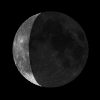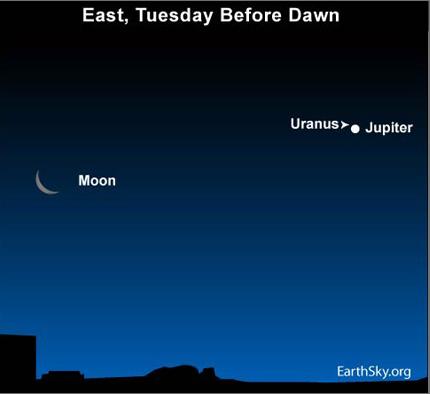Courtesy of EarthSky
A Clear Voice for Science
www.EarthSky.org

 The closest planet/planet pairing takes place in the morning sky on Tuesday, June 8. Jupiter and Uranus stand less than 1/2 degree apart. (For reference, the moon’s diameter spans 1/2 degree of sky.)
The closest planet/planet pairing takes place in the morning sky on Tuesday, June 8. Jupiter and Uranus stand less than 1/2 degree apart. (For reference, the moon’s diameter spans 1/2 degree of sky.)
The brighter of these two planets, Jupiter, beams as the brightest celestial point of light in the dawn and predawn sky. Uranus, though, only appears about 1/2000 as bright as Jupiter. In other words, you will need a dark sky and binoculars to see Uranus. You will have to get up before dawn tomorrow to see the two worlds in the same binocular field together.
The good news is that Jupiter and Uranus will remain close together, and will appear in the same binocular field for all this year. September and October of 2010 will be an especially good time to see the planetary duo, because Jupiter and Uranus will be shining all night long at that time of year.
Although Jupiter and Uranus look close together on the sky’s dome, they are actually far apart in space. Jupiter, the 5th planet outward from the sun, lodges about 5 times the Earth’s distance from the sun. Uranus, the 7th planet outward, lies much farther out, at about 4 times the distance of Jupiter.
Written by Bruce McClure
Astronomy Picture of the Day from NASA/JPL
U.S. Naval Observator Astronomical Information center